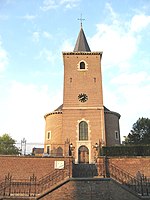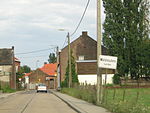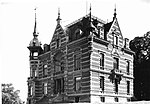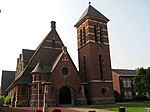Gingelom
Belgian Limburg geography stubsMunicipalities of Limburg (Belgium)

Gingelom (Dutch pronunciation: [ˈɣɪŋəˌlɔm]) is a municipality located in the Belgian province of Limburg. On 1 January 2006 Gingelom had a total population of 7,847. The total area is 56.49 km2 (21.81 sq mi) which gives a population density of 139 inhabitants per km2 (359/sq mi). The municipality includes the old municipalities of Borlo, Buvingen, Jeuk, Montenaken, Niel-bij-Sint-Truiden, Mielen boven Aalst, Muizen, Boekhout, Vorsen and Kortijs.
Excerpt from the Wikipedia article Gingelom (License: CC BY-SA 3.0, Authors, Images).Gingelom
Andréstraße, Chemnitz Kaßberg
Geographical coordinates (GPS) Address Nearby Places Show on map
Geographical coordinates (GPS)
| Latitude | Longitude |
|---|---|
| N 50.75 ° | E 5.1166666666667 ° |
Address
Andréstraße 33
09112 Chemnitz, Kaßberg
Sachsen, Deutschland
Open on Google Maps










